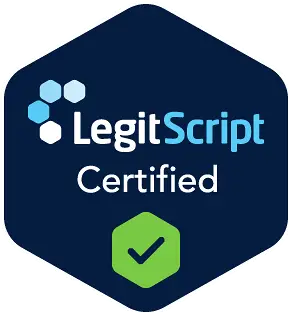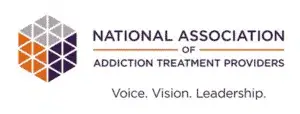Key Takeaways
- Opiate blockers like naloxone and naltrexone are crucial for managing overdoses and treating addiction.
- Comparative analysis of opiate blockers reveals differences in effectiveness and side effects, influencing treatment choices.
- Naloxone is a lifesaving emergency treatment for opioid overdoses, with increased public access.
- Methadone is a cornerstone in long-term opioid addiction treatment, with recent policy changes improving access.
- Buprenorphine is a partial opioid agonist that helps manage addiction but may require higher doses for fentanyl users.
- Research and innovations in opiate blockers are ongoing, with new pain medications and treatments being developed.
Opiate Blockers: What They Are and How They Work
Opiate blockers, also known as opioid antagonists, play a crucial role in the management of opioid overdoses and the treatment of opioid addiction. These medications work by competitively inhibiting opioid receptors in the central and peripheral nervous system, particularly showing the highest affinity for the mu receptor.
The mu receptors, which are the primary targets for both opioids and their blockers, are found throughout the brain and body. They are responsible for the pain-relieving effects of opioids as well as the euphoric high that can lead to addiction.
Antagonists like naloxone and naltrexone can reverse the effects of opioids by displacing them from the receptor sites, thereby terminating the effects of analgesia, euphoria and, importantly, respiratory depression, which is a life-threatening consequence of opioid overdose.
This not only prevents further opioid action but also can precipitate withdrawal symptoms in individuals who are opioid-dependent. It’s important to note that while centrally acting opiate blockers can cross the blood-brain barrier to exert their effects, peripherally acting antagonists do not. The administration of opiate blockers requires careful consideration and understanding of a patient’s opioid use history to avoid precipitating severe withdrawal symptoms.
This Season, Give Yourself the Gift of a Fresh Start.
Whether you are struggling with addiction, mental health or both, our expert team is here to guide you every step of the way. Don’t wait— reach out today to take the first step toward taking control of your life.
Comparative Analysis of Opiate Blockers
A comparative analysis of opiate blockers reveals differences in their effectiveness and side effects, which are crucial for determining the appropriate treatment for opioid use disorder (OUD). Studies indicate that medications for opioid use disorder (MOUD), such as buprenorphine and methadone, are effective in improving mortality, treatment retention and remission rates.
Comparative effectiveness studies, such as those reported in JAMA Network Open, suggest that long-term MOUD treatment with buprenorphine or methadone is associated with lower overdose and serious opioid-related acute care use. It’s important to note that while these medications are effective, they must be chosen and administered carefully, considering the individual patient’s health status and potential for side effects.
Naloxone: Emergency Opioid Overdose Treatment
Naloxone, commonly known by its brand name Narcan, is a critical medication used to reverse opioid overdoses. The US Food and Drug Administration (FDA) has recently approved an over-the-counter (OTC) naloxone hydrochloride nasal spray called RiVive, expanding access to this life-saving treatment. FDA approval of OTC naloxone sprays like RiVive underscores the commitment to combating the opioid epidemic by making antidotes more readily available to the public.
Projects like Ohio’s Project DAWN have significantly increased the distribution of naloxone kits, reflecting a 42% rise from 2022 to 2023. This expansion is part of a broader strategy to make naloxone available to non-medical personnel, including peers and family members of those at risk of opioid overdose.
Research has shown that ‘take-home naloxone’ programs are effective in equipping individuals with the means to manage overdoses during critical moments before emergency medical services arrive. The widespread distribution of naloxone is a crucial component of overdose prevention strategies, yet it remains one tool among many required to address the epidemic’s complexities.
Administering Naloxone: Protocols and Challenges
For effectiveness, rapid administration is paramount. Substance Abuse and Mental Health Services Administration (SAMHSA) states protocols for administering Naloxone must be established to ensure timely and correct delivery. Training is needed to reduce stigma among healthcare providers, which can impact the willingness to prescribe and distribute Naloxone.
A study highlighted by the National Center for Biotechnology Information (NCBI) points to disparities in Naloxone distribution, with some areas having little to no access. Financial barriers also exist, as many prescriptions require a copay, disproportionately affecting low-income populations.
Methadone: Long-Term Treatment for Opioid Addiction
Methadone is recognized as a cornerstone in the long-term treatment of OUD, acting as a full opioid agonist with a slower onset and longer duration of action compared to short-acting opioids like heroin or prescription painkillers. As a medication approved by the FDA, methadone is administered to mitigate withdrawal symptoms and reduce cravings, thereby supporting recovery and preventing relapse.
The scope of practitioners authorized to dispense methadone has been broadened, allowing nurse practitioners and physician assistants to order the medication, thereby increasing the availability of treatment options. While methadone treatment offers life-saving benefits, it is not without risks. Patients must be carefully monitored for potential side effects and treatment must be tailored to individual needs to ensure the best outcomes.
Methadone Treatment: Weighing Risks vs Rewards
In addition to treatment of OUD, Methadone is also used for managing moderate-to-severe pain. Its effectiveness and potential side effects are essential considerations for healthcare professionals and patients alike. Research has shown that methadone can reduce the likelihood of overdose deaths by up to 50% and is effective in reducing opioid use and associated risks.
However, methadone treatment is not without risks. Side effects can range from mild to severe, including respiratory depression, sedation, gastrointestinal issues and psychological effects. Methadone is also associated with QTc prolongation, which can lead to cardiac dysfunction.
The risk of adverse outcomes necessitates careful monitoring and assessment by healthcare providers. Methadone’s interaction with other substances, such as benzodiazepines and alcohol, can lead to severe sedation and respiratory depression, emphasizing the need for vigilance in its administration.
Buprenorphine: Partial Opiate Blocker
Buprenorphine is a partial opioid agonist used in the treatment of OUD. It works by activating the same receptors in the brain that are affected by opioids like heroin, fentanyl and oxycodone, but with less intensity, reducing cravings and withdrawal symptoms without producing the same level of euphoria.
Approved by the FDA in 2002, buprenorphine can be prescribed by certified physicians, offering a more accessible form of treatment compared to full agonists like methadone, which must be dispensed through specialized programs. Research indicates that the initiation of buprenorphine may involve mild withdrawal symptoms but can be effectively managed without prerequisite withdrawal.
Buprenorphine Therapy: Advantages and Challenges
Buprenorphine is known for reducing mortality risk by 50% and offering additional health and social benefits. Its efficacy in decreasing opioid-related mortality is significant, making it a critical component in addressing the opiate crisis.
However, the emergence of potent opioids like fentanyl has presented new challenges in buprenorphine therapy, necessitating a reevaluation of optimal dosages. Studies indicate that higher doses of buprenorphine may be required to effectively manage withdrawal symptoms and cravings in patients with fentanyl exposure compared to those using other opioids.
Despite its therapeutic benefits, buprenorphine’s potential for misuse exists, especially among individuals without opioid dependency. Its unique pharmacological properties, however, help mitigate this risk. Common side effects include nausea, headache and constipation, while serious side effects may include respiratory issues and dependency.
Innovation and Research in Opiate Blockers
The future of opiate blockers is a promising field, with significant research and development underway to address the global opioid crisis. A notable development is an experimental pain medication, VX-548, which has shown potential as an alternative to opioids for acute pain management. According to a CNN report, VX-548 works by blocking pain in the peripheral nervous system, unlike opioids that act in the brain, which could mitigate the safety risks and addictive potential associated with opioid use.
Furthermore, the National Institutes of Health (NIH) has sponsored symposia to explore new targets for pain treatment that do not involve the μ-opioid receptor, which is a significant focus for reducing opioid addiction and related adverse effects. These research directions include optimizing current opioid actions for severe pain conditions, understanding the onset and efficacy of antidepressant medications for pain treatment and identifying new targets for neuropathic pain treatment, such as epigenetic modifiers and G-protein modulators, as mentioned in a study published on PubMed Central.
Biotechnological advancements are also shaping the future of addiction treatments. Innovations such as depot injections, agonist/antagonist implants, deep brain stimulation and hapten conjugate vaccines are being researched as ways to minimize illicit use, decrease overdose risks and prevent diversion of medications to illicit markets, as discussed in a ScienceDirect article. These emerging therapies could offer more effective and safer options for managing opioid addiction and pain, heralding a new era in addiction medicine.
Start Your Opiate Addiction Treatment Today
There are quite a few different options for people who are seeking treatment for drug & alcohol addiction. Your individualized treatment plan at The Recovery Village Palmer Lake may include:
- Medical detox: Patients detox from substances in a clinical environment where doctors monitor health and provide medications to ease withdrawal symptoms.
- Inpatient treatment: Patients in inpatient treatment live at our facility and attend a full schedule of individual and group therapy, counseling and peer support sessions.
- Partial hospitalization program (PHP): PHPs provide patients with additional flexibility and independence than inpatient programs.
- Intensive outpatient program (IOP): IOPs help patients transition to life outside of rehab, with fewer hours of care and more time building skills and habits for recovery.
- Outpatient treatment: Outpatient care provides ongoing treatment after an inpatient stay and supports patients as they transition back into their daily lives.
- Aftercare: Aftercare programs help support long-term recovery through clinical and medical recommendations for follow-up care, relapse prevention plans and more.
If you or someone you love is struggling with drug or alcohol addiction, help is available. The Recovery Village Palmer Lake is here to support you throughout the entire recovery process. It’s time to get your life back. Call our Recovery Advocates today.








